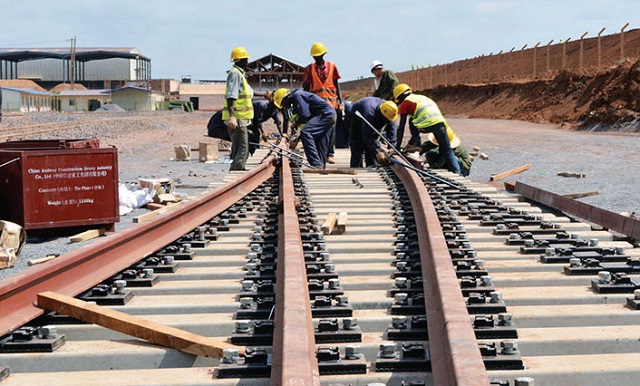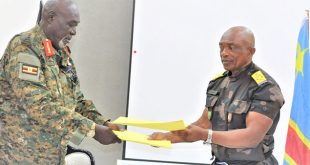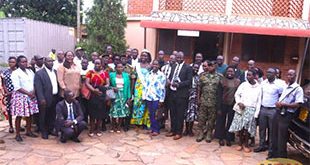
Kampala, Uganda | THE INDEPENDENT | A team of experts has concluded their due diligence tour of the Turkish firm that has been contacted by the government to construct the Standard Gauge Railway. The exercise was aimed at determining the financial strength and the evidence of past performances of the company that is implementing the Tanzania Standard Gauge Railway projects.
Recently, President Yoweri Museveni through a Twitter message said that in a meeting with Citi Bank, the bank executives had shown a willingness to fund the program. However, the financing aspect of the project is part of the negotiations with the firm that will be selected to implement the project.
“The ongoing talks with Yapi Merkezi also include financing. We had actually thought that we can push and as quickly as possible, have the financing solved. But I can tell you that the potential contractor is supposed to help us to secure financing,” said David Mugabe, the head of communications at the SGR project.
The Turkish firm was contacted after a long frustrating period of waiting on the conclusion of the financing process between China Harbour Engineering Company and the China Export and Import Bank for the Malaba-Kampala rail.
The delay was due to the failure of the two Chinese companies on one hand and Uganda and Kenya on the other to get a concrete agreement that Kenya would extend its SGR to the border with Uganda, at the same time that the Kampala-Malaba phase would be completed.
On what is happening currently, Mugabe says compensation of the affected persons will soon start in the Jinja area, having completed payment for PAPs half of the way to date. “So the main focus has been on the Eastern route, from Malaba to Kampala. Our main activity has been landing acquisition to secure the right of way. We have to-date acquired 130 kilometers of land, fully acquired, fully paid-for in seven districts.”
The districts are Tororo, Mayuge, Butalejja, Luuka, Namutumba, Iganga and Bugweri.
“We are now on the verge of entering Jinja proper, then continuing to Mukono, Bwikwe, Wakiso, and Kampala. So there is enormous work around land acquisition, which is actually the main activity. Because we are supposed to hand over the land to the contractor free of any encumbrances,” Mugabe says.
By delaying the implementation of the SGR projects, Uganda could be delaying a regional initiative, which was an idea conceived by Uganda, Kenya, Rwanda, and South Sudan, to connect the countries with this kind of railway to the coast, under the Northern Corridor Integration Project. This emerged from the Africa-wide plan to have a Standard Gauge Railway connecting major cities to the different coasts, and Tanzania is at the most advanced stage in East Africa.
This is aimed at improving the movement of cargo since the wider SGR can provide much better speeds and higher volumes of cargo than the meter gauge lines (MGR). The MGR is one meter wide between the two rails, while with the SGR, the rails are divided by a space of about 1.435 meters.
A quick internet search shows that currently, 55 percent of railways globally are SGR, while meter gauge railways are being abandoned due to their lower cargo capacity and speeds. They are however important where it is hard to get wider space like in mountainous regions. Records show that all high-speed rail lines use standard gauges except those in Russia, Finland, and Uzbekistan.
“The country should have a reliable railway network that can support the economic growth, with Uganda transit cargo expected to grow to 30 million tons of cargo between 2025 and 2030,” Mugabe says. He says the SGR will have other advantages including the eight stations between Kampala and Malaba, which will house facilities like cold storage for perishable products.
These, are expected to serve, for example, fruit and vegetable farmers who hope to sell them to farther places including Kenya. The SGR will also provide passenger services. “In the short-term, we can do with the meter gauge, but in the long run we need to have an efficient SGR so we must intensify the activities now.”
But ultimately, the dream was by the end of this year everything around those discussions are concluded. State Minister for Transport, Fred Byamukama explained the whole SGR plan is to connect Kampala with the border with Kenya at Malaba, South Sudan at Nimule, DRC at Mpondwe, and Rwanda at Mirama Hills.
“The program for the SGR covers a total of about 1,724 km to be constructed in phases starting with the Eastern Route (Kampala –Malaba stretch), which is 272 km long. The other is the Northern Route running from Tororo, through Gulu Nimule with a branch from Gulu to Pakwach and on to Vurra, over a total of 762 km,” he said.
The Western Route, from Kampala to Mpondwe, through Bihanga and Kasese, will have a branch off to Hima and cover a total of 383.12 km, while the Southern Route will run from Bihanga to Mirama Hills with a spur to Muko), over a total of 280.3 km.
Most of the SGR wayleaves in the eastern and northern routes are running alongside the MGR lines currently under rehabilitation. “But this is in the longer term and our focus now is on Malaba-Kampala, which is more urgent,” says Mugabe, adding that there is no fixed timeline for all these projects, though it had been planned that this year would see the conclusion of the procurement process.
“What I can tell you is that there are intense discussions. As we talk now we have just had a team of technical people, finance people, that has returned from doing due diligence. So we are in the procurement space,” he said.
*****
URN
 The Independent Uganda: You get the Truth we Pay the Price
The Independent Uganda: You get the Truth we Pay the Price



